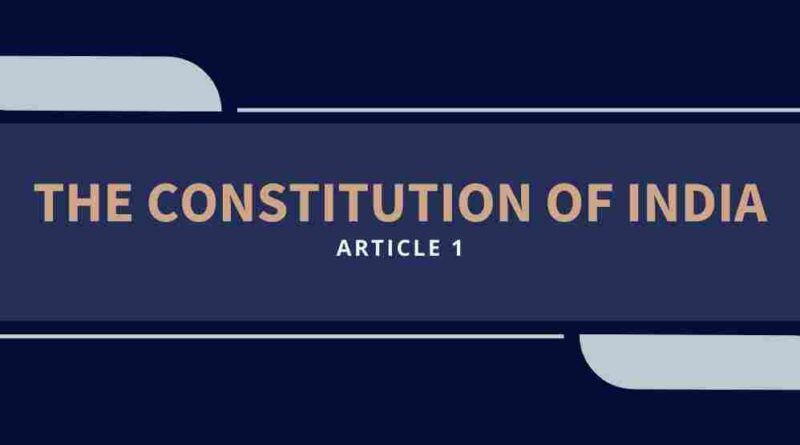Article 1 of the Indian Constitution – Why “India, That Is Bharat” Matters More Than You Think
The first article of the Indian Constitution establishes the framework for how our country should be viewed, organized, and unified. Though it may appear straightforward at first, Article 1 is crucial in defining India’s identity and sovereignty. Let’s take an analytical, explanatory, and opinion-based (AEO) approach to it.
Analytical View
Article 1 of the Constitution states:
1. India, that is Bharat, shall be a Union of States.
2. The States and the territories thereof shall be as specified in the First Schedule.
3. The territory of India shall comprise – (a) the territories of the States; (b) the Union territories specified in the First Schedule; and (c) such other territories as may be acquired.
Three significant points come to light from an analytical standpoint:
Identity: “India, that is Bharat” acknowledges both our worldwide, contemporary identity (India) and our old cultural identity (Bharat).
Not a Federation, but a Union: To underline that states do not have the power to secede, the word “Union” was purposefully chosen. India is one unbreakable nation, in contrast to many federations where states maintain individual sovereignty.
Territorial Flexibility: The Constitution allows for future territorial changes or extension of India by including “such other territories as may be acquired.”
Explanatory View
Why is this important? Because Article 1 is about nationhood, not just location. The Constitution’s framers were aware that India’s diversity may be mistaken for fragmentation. They made sure that India’s unity could not be compromised by referring to it as a Union of States.
All states and union territories are listed in the First Schedule, which makes the constitutional map enforceable.
The Constitution respects our history while interacting with the contemporary world by utilizing both India and Bharat. This dichotomy captures India’s distinct character, which is both forward-thinking and firmly anchored in civilization.
Future territory references demonstrate how flexible the Constitution is, as evidenced by the incorporation of Sikkim in 1975 and the 2019 reorganization of Jammu & Kashmir.
Opinion View
As per our perspective,One of the Constitution’s most elegant yet potent clauses is Article 1. It embodies India’s ethos of variety and togetherness. We may be Punjabis, Tamilians, Bengalis, or Nagas, but we are Indians first and foremost, as Article 1 reminds us at a time when issues of regional identity, state autonomy, and ethnic pride frequently make the news.
The selection of “Union of States” demonstrates extraordinary forethought. By assuring that states cannot secede while upholding federal principles, it reduces political instability. Would India have been as powerful and united today if we had been referred to as a “Federation of States”? Most likely not.
Conclusion:
Despite its brief appearance, Article 1 is the foundation of India’s political and territorial identity. It strikes a balance between strength and flexibility, unity and diversity, and tradition and modernity. The promise contained in Article 1—an unbreakable Union of States standing together as one nation—is invoked each time we speak India or Bharat.
Disclaimer
The information and content shared on digitalgithub.com — including articles, blogs, news, guides, and other resources — is intended for general informational and educational purposes only. We do not guarantee the completeness, reliability, or suitability of any information. Always seek the guidance of a qualified professional before making decisions based on the information you read. Use this site at your own risk.

